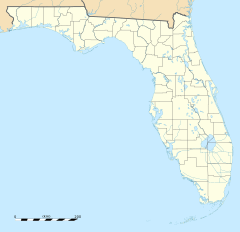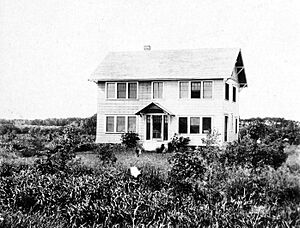Okeelanta, Florida facts for kids
Quick facts for kids
Okeelanta, Florida
|
|
|---|---|
| Country | |
| State | |
| County | Palm Beach |
| Elevation | 10 ft (3.0 m) |
| Time zone | UTC-5 (Eastern (EST)) |
| • Summer (DST) | UTC-4 (EDT) |
| Area code(s) | 561 |
| GNIS feature ID | 294872 |
Okeelanta is a small, former community in Palm Beach County, Florida, in the United States. It's located about 4 miles (7 km) south of South Bay, right on U.S. Route 27. This area was planned as a new town in the 1910s. However, it had mostly disappeared by the end of the 1920s. The name "Okeelanta" is a mix of "Lake Okeechobee" and "Atlantic Ocean."
Contents
History of Okeelanta
Founding the Community
In early 1913, a former college professor named Thomas E. Will bought nearly 900 acres of land. This land was south of South Bay in Florida. He already owned 120 acres nearby. Later that same year, Will started a planned community called Okeelanta. It was located where the Bolles Canal meets the North New River Canal. He divided the land into small plots to sell to people who wanted to settle there.
His son, Lawrence, was one of the first five people to move to Okeelanta. The early settlers found it hard to farm the mucky soil. But they learned to grow different crops like beans, potatoes, cabbage, and lettuce. Thomas Will himself joined the settlers in late 1914.
Early Life and Growth
Supplies for the community came by boat. They traveled up the New River from Fort Lauderdale, which was almost sixty miles away. In early 1915, a store was built after Will offered the owner a free plot of land. More settlers arrived throughout 1915. In 1916, the Palm Beach County School Board built a one-room schoolhouse. This was on land that Will had donated.
By 1917, Okeelanta had 110 families living there. It also had a hotel, a town hall, a lumberyard, a blacksmith, and a barber shop. Thomas Will and other residents worked to get a road built from West Palm Beach to Fort Myers. This road was supposed to pass through Okeelanta.
Challenges and Disappearance
The new road was built, but it ended up bypassing Okeelanta. It ran along the south shore of Lake Okeechobee, four miles north of the community. Still, a dirt road was built along the Bolles Canal. This connected Okeelanta to the main highway at Six Mile Bridge, near Belle Glade.
By 1920, the town's population had grown to 200 residents. However, they faced many problems. These included issues with the soil, floods, freezes, and lots of mosquitoes. That year, a very bad flood happened. This stopped all farming activities. Thomas Will left Okeelanta for Fort Lauderdale, thinking it would be a short trip.
In the early 1920s, the water levels kept changing. Sometimes the water was too low for boats to bring supplies. Other times, it was too high for farming. By 1925, a visitor reported that Okeelanta was almost empty. The land around the old hotel was turning back into swampy ground. A very strong storm in 1928, known as the 1928 Okeechobee hurricane, caused the final end of Okeelanta.
Remembering Thomas E. Will
After the main east-west road bypassed Okeelanta, Thomas Will started working to get a new road built. He wanted a road from Fort Lauderdale to Lake Okeechobee, along the North New River Canal. Later, as sugar farms grew in the area, he pushed for a road from Miami to South Bay.
In 1935, the Florida State Road Department set aside money to build this road. In 1937, the Florida Legislature officially named the road the Thomas E. Will Memorial Highway. This highway opened in 1941. Today, this road is U.S. 27. It passes through the area where Okeelanta once stood. All that remains of the old community is the paved Bolles Canal Road, now known as County Road 827.



